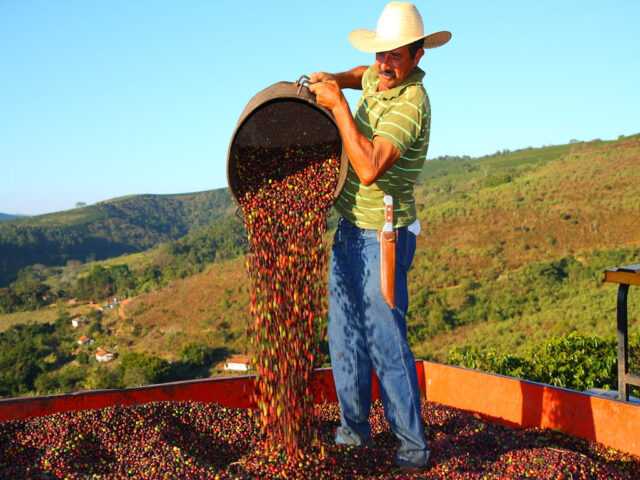MILAN – Brazilian coffee output in the 2020/21 season was high, according to Cepea collaborators. Many of these agents believe that the output will be similar to that estimated by the USDA in May, totaling 67.8 million bags, which would be a new record. However, in September, Conab (Brazil’s National Company for Food Supply) forecast the harvest to total 61.6 million bags (60 kilos each) in Brazil, 25% higher than that in the 2019/20 crop, but lower than that in the 2018/29 season.
Considering only arabica coffee, in general, Conab’s estimates are slightly lower than that forecast by the agents consulted by Cepea. While Conab estimates the Brazilian output at 47.3 million bags – 38.1% higher than that in 2019/20 –, Cepea collaborators believe the national coffee output will range from 47.5 million to 52 million bags. Regionally, coffee farmers in most Brazilian regions surveyed by Cepea expect production to be higher than that forecast by Conab and similar to that estimated by the USDA.
These agents are based on the positive biennial cycle of coffee crops this season, favorable weather during crops development, production of new and/or recently pruned crops and greater care of coffee trees. This scenario also resulted in larger-sized beans and excellent quality coffee beverage.
As regards robusta, the output estimated by agents from the Brazilian coffee market is more similar to that forecast by Conab, at 14.2 million bags, 5.1% down compared to that in the previous season (2019/20). Cepea collaborators believe the total should range from 13.3 to 16.3 million bags. Lower robusta production in 2020/21 is linked to the weather issues during flowering, the lack of investments in some crops – due to lower price levels in the past years – and the high production in previous crops, which debilitated plants in 2020/21.
Arabica coffee prices dropped sharply in the Brazilian market in September reports Cepea in its latest market analysis. Between August 31 and September 30, the CEPEA/ESALQ Index for arabica coffee (delivered to São Paulo city) decreased by 69.44 Reais per 60-kilo bag (-11.3%), closing at 541.13 BRL (96.32 USD)/bag on Sept. 30. Pressure came from the lower number of purchasers in the market and, primarily, the steep devaluations of arabica Futures in mid-September.
At ICE Futures (New York Stock Exchange), the December/20 Future decreased steeply in September too, reflecting technical factors, the dollar appreciation against Real and the end of a large 2020/21 harvest in Brazil.
Uncertainties about the weather, logistic issues (transport and stocking) and the high volume sold in previous months kept Brazilian purchasers and sellers away from the market, and, consequently, liquidity low. Many Brazilian coffee farmers had made cash flow, since they sold the product when prices were higher.
Robusta prices dropped in Brazil in September too, but not as sharply as arabica did. Between August 31 and September 30, the CEPEA/ESALQ Index for the robusta type 6, screen 13, Espírito Santo State, decreased by 10.99 Reais/bag (-2.7%), closing at 396.33 BRL (70.55 USD)/bag on September 30.
Devaluations were mainly influenced by international price drops for this variety and the lower number of purchasers in the market. Abroad, quotes were pressed down by the end of the crop in Brazil, rain forecasts in Brazil and technical factors. Agents are also focused on the 2020/21 crop in Vietnam, the top robusta-producing country in the world, where the harvesting should begin in the coming months.
In the Brazilian market, robusta deals were mostly for exports, since agents from national coffee roaster were away from the market, due to the high price levels for this variety.
















